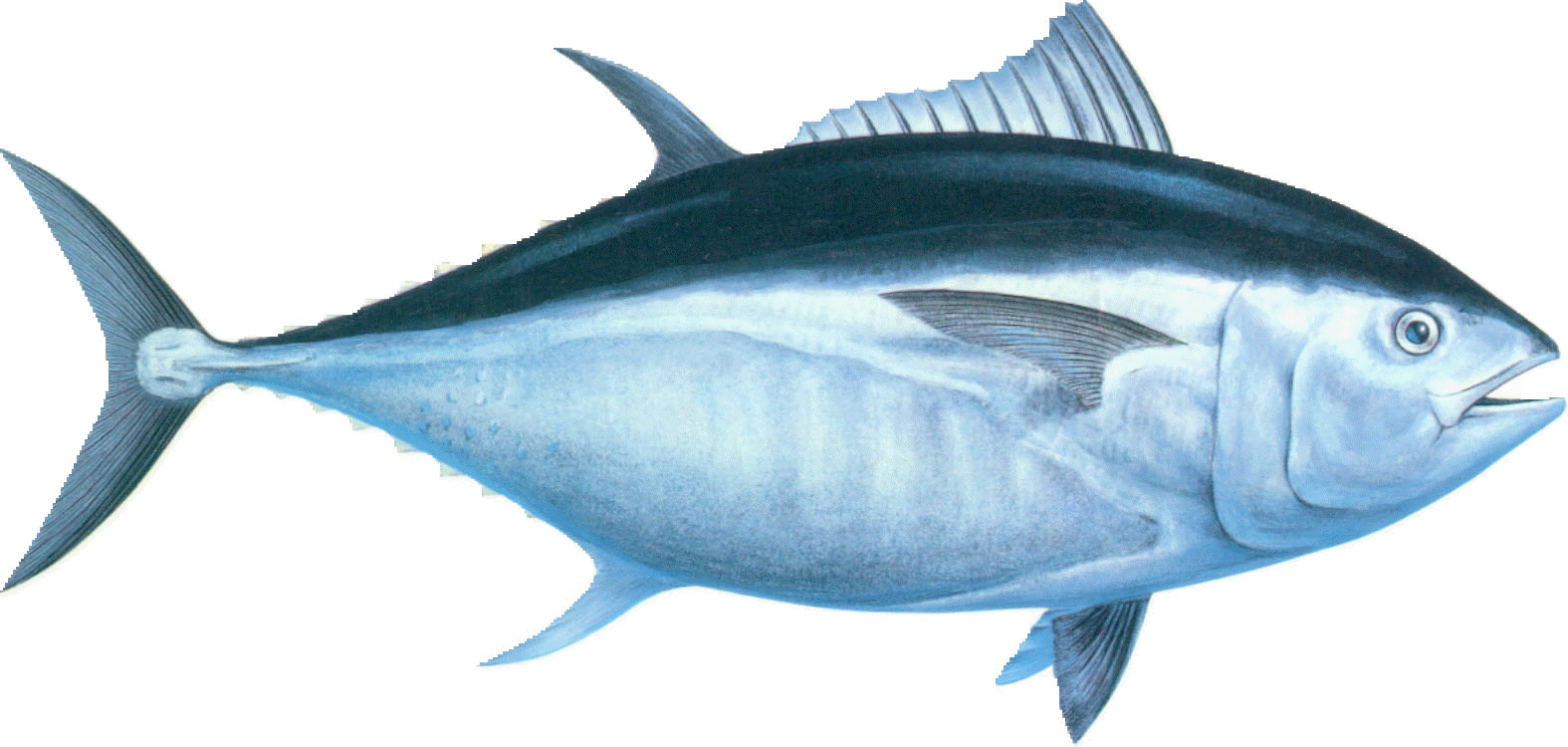
Bluefin Tuna
Northern bluefin tuna, which are comprised of Atlantic bluefin tuna (Thunnus thynnus) and Pacific bluefin tuna (Thunnus orientalis), are among the biggest, fastest, and most wide-ranging animals on earth. Adult bluefin tuna range in size from 300 to 1500 pounds and can grow beyond 10 feet in length. Bluefin tuna are dark above and silvery below, often with an iridescent shine. They have a conspicuous keel on either side of the tail base, a row of small finlets behind dorsal and anal fins, and a corselet of enlarged scales in the shoulder region. When hunting or being hunted (killer whales and mako sharks are two predators of bluefin tuna), bluefin can accelerate to speeds in excess of 50 miles per hour.
Northern bluefin tuna can live up to 40 years and hatchlings have a 1-in-40-million chance of reaching adulthood eight years later. Bluefin join schools when they are 1/2-inch long, school strictly by size, and swim in a single file, side-by-side (soldier formation) or in an arc (hunter formation). Sometimes bluefin swim below schools of yellowfin tuna, relying on skittish yellowfin to alert them of predators.
Bluefin are cooperative hunters, like wolves or killer whales, and are a temperate-water fish whose range extends from warm to cold waters where food is abundant. Bluefin follow electronic fields, currents and scents during transoceanic journeys and navigate using the sun as a compass. Most notably, bluefin are warm-blooded and maintain body temperatures between 15 and 20°C above surrounding water. Northern bluefin tuna may have the highest metabolism of any known fish, they retain 98 percent of muscular heat and are superbly adapted to temperate and cold waters close to shore and far out to sea.

© 1998 - 2022 EuroPacific Tuna Ltd